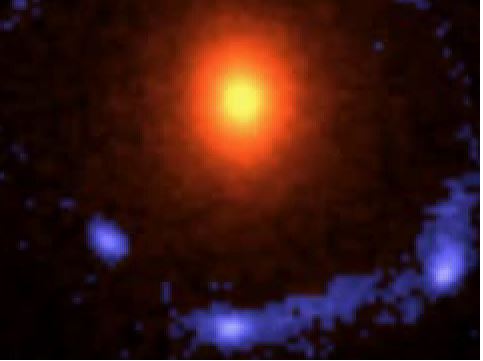

| Online: | |
| Visits: | |
| Stories: |

| Story Views | |
| Now: | |
| Last Hour: | |
| Last 24 Hours: | |
| Total: | |
17 New Strong Gravitational Lenses Discovered by NAOC Researchers Using HST Data
Dark matter is believed to contribute more than 80% of the total mass in our Universe as suggested by numerous observational facts. However, unlike the ordinary matter we usually see in daily life, dark matter does not emit any light and therefore appears to be completely invisible to most of our detection instruments. The only way of detecting dark matter is through its gravitational effects. One such unique probe is the strong gravitational lensing phenomenon in which the light rays from a distant object (the “source”) are deflected by the gravity of an intervening object (the “lens”) and eventually form distorted, multiple images. “The image separations can provide a robust and accurate measurement of the total mass of the lens object, including dark matter,” comments Bolton.

Credit: National Astronomical Observatories, Chinese Academy of Sciences
In order to push the detection limit downward, Shu and collaborators specifically selected 21 strong-lens candidates involving redshift 2-3 Lyα emittersas the background sources from approximately one million galaxies. Lyα emitters are young galaxies that emit strong Lyα emission due to the transition of the electron of a hydrogen atom from the first excited state to the ground state. “Compared to previous samples, Lyα emitters are intrinsically smaller by a factor of 3 to 5, and therefore can push the detection limit down by roughly an order of magnitude,” comments Shu.

Credit: National Astronomical Observatories, Chinese Academy of Sciences
By analyzing the HST data, Shu and collaborators found that the background Lyα emitters are generally irregular and clumpy. “With the aid of lensing magnification, we can resolve the Lyα emitters in exceptional detail with sizes from a hundred to several thousand light years,” comments Perez-Fournon. “Future follow-up observations of the Lyα emitters will expand our understanding of how galaxies form and evolve,” adds Zheng. This specially designed, new strong-lens sample promises to be an invaluable resource for studying high-redshift Lyα emitters and the nature of dark matter.
Contacts and sources:
National Astronomical Observatories, Chinese Academy of Sciences
This work has been recently published in The Astrophysical Journal (Shu et al., 2016, ApJ, 833, 264). This work is also supported by the National Science Foundation of China. Other members of the team are Prof. Adam Bolton (National Optical Astronomy Observatory), Prof. Christopher Kochanek (Ohio State University), Dr. Ismael Perez-Fournon (Instituto de Astrofisica de Canarias), Prof. Masamune Oguri (University of Tokyo), Dr. Antonio D. Montero-Dorta (University of Utah), Matthew A. Cornachione (University of Utah), Dr. Rui Marques-Chaves (Instituto de Astrofisica de Canarias), Prof. Zheng Zheng (University of Utah), Dr. Joel Brownstein (University of Utah), and Prof. Brice Menard (Johns Hopkins University).
Source:


